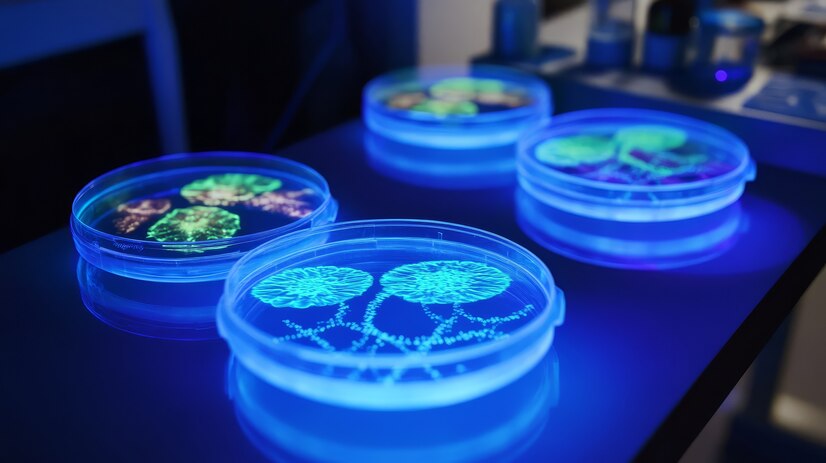Protein expression is a fundamental process in biotechnology, research, and pharmaceutical industries. Whether you’re involved in drug discovery or structural biology studies, monitoring and evaluating protein expression is essential. Among the various tools and methods used, Protein A Chromatography Resin has become one of the most reliable techniques for purifying and checking the expression of recombinant proteins. In this article, we’ll break down how to check protein expression, focusing on critical methodologies, particularly in the context of Recombinant Protein Expression Service and Custom Protein Expression projects.
Understanding Protein Expression
Protein expression refers to the process by which cells produce proteins, which are critical for cell function and regulation. In a laboratory setting, scientists often manipulate this process to produce recombinant proteins—proteins encoded by genes that have been cloned in an expression system. These recombinant proteins are vital for medical research, drug development, and industrial applications.
When working with recombinant proteins, it’s important to confirm whether the protein has been successfully expressed and if its quantity and quality meet the required standards. This is where various protein expression analysis techniques come into play.
Key Methods to Check Protein Expression
SDS-PAGE (Sodium Dodecyl Sulfate Polyacrylamide Gel Electrophoresis) SDS-PAGE is a common and straightforward technique used to assess protein expression. It separates proteins based on their molecular weight, allowing scientists to visualize the expressed protein.
How it works:
Proteins are denatured and coated with SDS, giving them a uniform negative charge.
The mixture is loaded onto a polyacrylamide gel, and an electric current is applied.
Smaller proteins travel faster through the gel, while larger proteins travel slower.
After the electrophoresis is complete, the gel can be stained to visualize the protein bands. The size of the band corresponding to the recombinant protein provides an indication of its presence and abundance.
Western Blotting Western blotting is another crucial technique used to confirm protein expression and verify the specificity of the expressed protein. In this method, proteins separated via SDS-PAGE are transferred to a membrane and probed with antibodies specific to the target protein.
How it works:
Proteins are separated by SDS-PAGE.
The proteins are transferred onto a membrane (usually nitrocellulose or PVDF).
The membrane is then probed with antibodies that bind specifically to the target recombinant protein.
A secondary antibody, conjugated with a detection system, is used to visualize the protein.
Western blotting not only confirms the presence of the protein but also gives insight into its molecular weight, providing essential validation for Custom Protein Expression projects.
ELISA (Enzyme-Linked Immunosorbent Assay) ELISA is a highly sensitive method for quantifying protein expression levels. This technique involves coating a plate with an antibody that binds to the target recombinant protein. The amount of protein bound to the antibody is then quantified using enzyme-linked secondary antibodies.
How it works:
A specific antibody is immobilized on a plate.
The expressed protein sample is added, and it binds to the antibody.
A secondary antibody, linked to an enzyme, is added to bind the target protein.
A substrate for the enzyme is introduced, producing a detectable signal, typically a color change.
ELISA is especially useful when working with low-abundance proteins, allowing you to quantify the amount of recombinant protein expressed in your system.
Protein A Chromatography Resin Protein A Chromatography Resin is widely used for purifying antibodies and recombinant proteins that contain an antibody fragment (such as Fc-fusion proteins). This method is highly effective for Recombinant Protein Expression Service projects, particularly in biopharmaceutical applications where antibodies or antibody-like proteins are being produced.
How it works:
Protein A is immobilized on a resin, which selectively binds to the Fc region of antibodies or antibody-fusion proteins.
The expressed recombinant protein sample is passed through a column containing the Protein A resin.
The bound protein is eluted with a specific buffer, allowing for purification and concentration of the target protein.
The protein can then be analysed using techniques like SDS-PAGE or ELISA to confirm successful expression.
This method offers high specificity, making it ideal for confirming and quantifying proteins in Custom Protein Expression projects.
Mass Spectrometry Mass spectrometry is a powerful tool for identifying and characterizing proteins. It provides detailed information about the protein’s structure, post-translational modifications, and quantity. While mass spectrometry is often more expensive and time-consuming, it is invaluable for in-depth protein analysis, especially in complex systems where multiple proteins are being expressed.
How it works:
The protein sample is digested into peptides using enzymes like trypsin.
The peptides are ionized and passed through a mass spectrometer.
The mass-to-charge ratio of the peptides is measured, providing a spectrum that can be analyzed to determine the identity and abundance of the protein.
This method is particularly useful in Recombinant Protein Expression Service workflows, where understanding protein modifications is crucial for therapeutic or research purposes.
Choosing the Right Method for Your Needs
When checking protein expression, the choice of technique depends on several factors, including the type of protein, the desired level of detection sensitivity, and the available equipment. For instance, if you need a quick, qualitative check of protein expression, SDS-PAGE or Western blotting may be sufficient. However, for more quantitative analysis or purification, Protein A Chromatography Resin and ELISA are more suitable.
For projects that require a high degree of specificity and purity, such as Custom Protein Expression in antibody development, Protein A Chromatography Resin is an indispensable tool. It allows for efficient purification of Fc-fusion proteins and antibodies, ensuring that the expressed protein is both functional and free from contaminants.
Conclusion
Checking protein expression is a critical step in any Recombinant Protein Expression Service or Custom Protein Expression workflow. Whether you’re confirming the presence of a target protein or purifying it for further use, selecting the appropriate method ensures accurate results and high-quality protein products. Techniques like SDS-PAGE, Western blotting, ELISA, and Protein A Chromatography Resin offer reliable options for evaluating protein expression. By integrating these methods, you can efficiently check, purify, and validate recombinant proteins for research, industrial, or pharmaceutical applications





